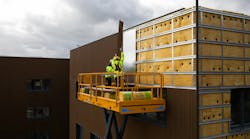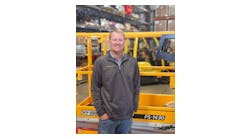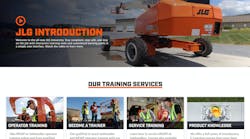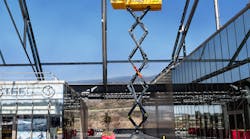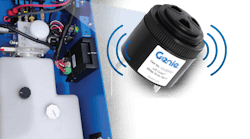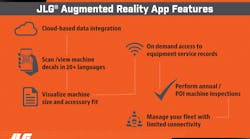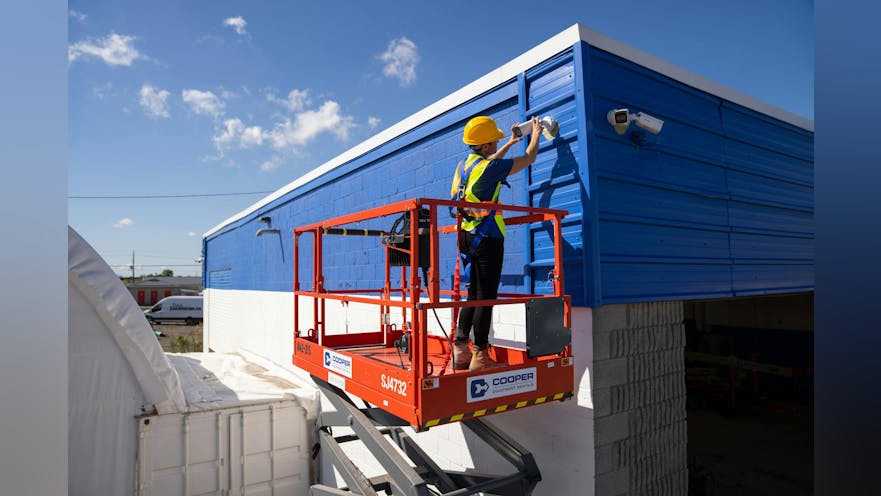By Justin Wharton
Photos by Cooper Equipment Rentals
Typically when an accident happens on an airplane, the same accident typically doesn’t happen again. Why? Because the aviation industry has perfected the model of learning from its mistakes. The industry was once dangerous – but through learning and a focus on safety, flying is now the safest form of travel.
What does this have to do with aerial construction equipment? To start, the industry is becoming safer each year, thanks to technological advancements, more reporting and changes in aerial safety rules.
Some of these changes have brought new challenges for contractors. Equipment has by default gotten heavier and more complicated to operate. More training is now needed. But these advancements also bring an opportunity to adapt and improve safety on the jobsite. When you have an operator suspended 100 feet in the air on a 10,000-pound lift with a lot of horsepower, you want to be darn sure they’re following safety protocols because aerial accidents almost never end in injuries…they end in death.
This means rental providers have a huge responsibility to not only supply customers with properly maintained, up-to-date aerial equipment, but to ensure they can provide a partnership that involves training and education on new regulations.
Providing your customers with the latest equipment helps build a better partnership
As rental equipment providers, we have to think beyond just the equipment. Contractors may be leaning more into rental because they don’t want to worry about costs, but it’s more than that. Staying ahead of the competition while reducing costs and keeping workers safe isn’t easy. Contractors need the right rental partner to help get them there.
Offering customers the latest equipment and technology is one way to support their business. With new advancements in aerial equipment design, both safety and equipment use has improved. Data from the machine can provide information on how equipment is being used (or not) to its maximum efficiency. We see lots of customers using lifts that aren’t the right size for the job – either too large or too small, leading to unsafe working conditions.
New ANSI regulations and built-in technology have made aerial equipment safer. The latest lifts are coming with equipment sensors as a way to tap into insights around machine health and operator productivity. Load-sensing hydraulics can measure weight in the platform and stop elevating if overloaded. Machine tilt sensing requirements allow equipment to operate on slight slopes – the tilt sensor sounds an alarm and disables boom and drive functions if the incline surpasses the machine’s rated slope tolerance. Apart from the safety benefits, this level of understanding can be a useful tool to help uncover gaps in operator knowledge and highlight when additional training may be needed.
Training has never been more important
We’ve all seen the famous picture of the construction workers who built New York’s Empire State Building. It’s hard to believe they went about their jobs with little to no protection. Thankfully things have changed a lot since those days…but accidents still happen. Aerial lifts come with their own unique risks – electric shock from power lines, a strong gust of wind, falls from heights, collisions with other machines, or even machine tip-overs. No one wants to have to make that call after an accident. This means ensuring all workers are properly trained to operate aerial lifts and also have the right safety certifications and knowledge.
As equipment rental providers – how do we ensure our workers AND customers are following the guidelines and meeting specific health and safety standards? To start, requiring any individual working on or around aerial equipment to have the skills and training to proactively identify, evaluate and control potential hazards is a must. Safety programs need a continuous improvement mindset – this means creating a culture of safety in the workplace, retraining experienced employees and encouraging workers to share concerns. At Cooper, new hires are paired with a mentor to hold them accountable and make sure they understand and internalize our safety practices. This can go a long way in preventing incidents from occurring.
We also provide an aerial training program for our employees and customers that consists of an in-class theoretical course and an on-site evaluation to verify the operator's ability to operate a specific lift. On successful completion of both parts of this program, the participant is certified to operate power elevated mobile aerial work platforms, booms and lifts.
Parts of Canada have a mandatory “working at heights” training program for workers on construction or industrial projects who use any fall protection systems. This helps ensure workers understand the elimination of fall hazards and how to use and care for fall protection equipment and understand when and how it is required.
Does your rental fleet include electric/battery powered lifts?
We are seeing more customers looking to electric and battery powered aerial equipment as a way to reduce costs and meet stricter regulations around emissions. Electric booms and telehandler machines are typically used in indoor or confined space applications where exposure to fumes can be harmful to operators. These new models can better support those operating in small indoor spaces and environmentally sensitive worksites where diesel exhaust is restricted.
Some customers are still skeptical and uncertainty around battery performance is not uncommon. When customers are able to test drive electric equipment, they can experience the benefits (and challenges) for themselves. With the right level of awareness, even the biggest skeptics can see they’ll have enough power to work through a full 8-hour day on one charge. Not to mention how electric equipment can support contractors for specific applications or when bidding on a new job that requires zero emissions. There’s also the opportunity for substantial cost savings around fuel, depending on the length of the project. As equipment providers, it’s our job to help change perceptions and re-educate customers not just on the safety benefits, but applications and charging solutions around electric aerial equipment.
Safety is just good business.
Any change comes with a bit of a learning curve. New equipment feels different to operate compared to the machines we’re used to. Electric/battery-powered aerial equipment is heavier than diesel counterparts, which can be a deterrent for some sites where equipment may be moved or relocated.
Our job as equipment providers is helping customers get past this learning curve. Providing access to a fleet of new equipment paired with leading edge technology is one part of the equation. But safety is equally important – educating and training as a way to create safer workplaces and reduce the rates of accidents. The loss of human life is always unacceptable — not to mention the financial costs associated with an incident. The construction industry may be regulated by health and safety acts but as rental providers, we need to lead by example and raise the bar on safety when it comes to the aerial equipment we provide to our customers.
Justin Wharton is director of operations - Canada West, Cooper Equipment Rentals.
